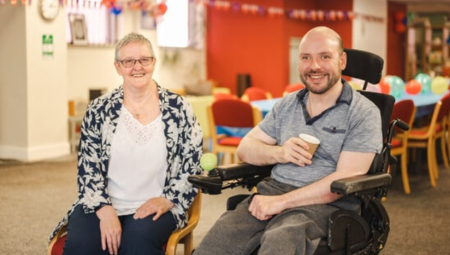Background
Mental health problems have significant negative effects on young people’s lives, and these often last into adulthood and adversely affect health, wellbeing, education, employment, and individuals’ relationships. Intervening early can improve the lives of young people struggling with mental health problems. However, identifying problems is challenging, as the early symptoms often emerge as other problems, such as not doing so well at school, struggling with friendships, or behaving differently. Early evidence suggests there may be some signs that can predict if and when a young person is developing problems. However, this information is held in a wide range of different places, such as the health records held by hospitals and GPs, or in information held by social workers and schools.
This project aimed to see if it was possible to bring this information together in a safe and secure way to create a de-identified, ‘live’ data resource that links information from these sources. Additionally, this project explored if it was possible to develop digital tools that can identify those with the early signs of a mental health problem, as well as those who are at high risk of developing one in the future. Also, this research aimed to find if it was possible to predict which treatment would be most likely to help with young person. It was believed that using data like this had a huge potential to change lives for the better, but it was also incredibly important that information is only used in ways that are acceptable to the people concerned, so this was explored in depth with young people and their carers.
Finally, to facilitate implementation and deliver impact to individuals this project explored how early identification tools could fit into current mental health services. This involved working with engineers and taking a ‘Systems Thinking’ approach to understanding and developing child mental health services to understand how best to implement the tools in order to improve children’s outcomes. To address these challenges, they created a multi-disciplinary collaboration drawing together expertise from the social sciences, public health, psychiatry, computer sciences, genetics, implementation scientists, artificial intelligence and engineering. This was to ensure that these developed tools and services met the needs of young people which was critical to the success of this project. This research involved working with members of the public and those with lived experience to understand the acceptability of the approach and taking a systems’ thinking approach to understand how best to design and implement the tool to maximise uptake and impact on individuals. This project also worked with Anna Freud National Centre for Children and Families, which had a formal role to develop and run the programme, as well as contribute to the generation of our research.
Project aims:
This project aimed to:
- Create a collaboration of experts from academia, clinical services, education, social care, computer science, data security, and policy makers to work together to try to solve some of the challenges of building a digital early intervention tool.
- Explore with young people, their families and carers, and those who have experienced mental health problems in childhood whether they think a tool like this would be a good idea, how they feel about data being used in this way, and how they think a tool like this should be used.
- Determine how best to achieve the high levels of data security required, so that only those people involved in a person’s care can see identifiable information. This project wanted to establish how to build a pilot dataset of de-identified information and test if it’s possible to create a ‘real-time’ resource with which to build our early identification tool.
- Explore how to make a digital tool work within the NHS, schools, and social care settings to enable earlier identification of young sufferers of mental health problems.
Project activity
The project had four workstreams:
- PPI and acceptability – this involved facilitating workshops and feedback sessions which helped shape our protocol and ethics application. Identified individuals to join the core team.
- Technical build - this entailed submitting an application to create pilot linked dataset. Undertaking a pilot to translate Intermine into database for healthcare use using de-identified CAMHS health service data.
- Data curation and analytics - established clinical and data leads at each site and are currently developing data requests with the four partners sites (Cambridge University Hospitals, Cambridgeshire Community Service NHS Trust (CCS), Local authority and Cambridgeshire and Peterborough NHS Foundation Trust). A scoping review took place and a Delphi process to prioritise data requirements.
- Systems thinking – completed stakeholder mapping exercise and the ‘Improvement Canvas’ which planned systems thinking approach.
Impact
- Created a digital tool that identifies children and young people with early stages of mental health problems, and those at risk of future problems.
- Implemented into re-designed clinical pathways which incorporate the tool.
- Training materials for professionals.
- Validated artificial intelligence algorithms that can be utilised in other clinical information systems.
Papers/resources
- Linked seven-year cohort of de-identified information relating to individuals 0-18y in Cambridge & Peterborough.
- Live linked database of identifiable information relating to CYP 0-25y in Cambridge & Peterborough, for clinical use.
- Live linked de-identified database of de-identified information relating to CYP 0-25y in Cambridge & Peterborough, for population health and research use.
- Towards early identification of mental health problems in children's social care article.
- A paper focusing on the projects public and patient involvement is being re-submitted for peer review. A 1-page summary of the PPI findings can be found here.
- A TikTok video to inform young people about the project.
- This project co-designed the acceptability research programme with a PPI group & Anna Freud Centre.
Next steps
- We are in the process of applying for ethics.
- We will be developing communications materials to ensure transparency (e.g. public facing website).
- Building data model for child mental health.
- Completion of the operationalising of the risk factors identified in the delphi.
- We will be refining the social care prototype early identification model.
- We will aim to establish a PPI community (Child & adolescent: research involvement for the next generation).
Who was involved?
Principle Investigator: Dr Anna Moore, University of Cambridge and Cambridgeshire and Peterborough NHS Foundation Trust
Researchers and institutions
- Dr Rudolf Cardinal, University of Cambridge
- Professor Tamsin Ford, University of Cambridge
- Professor John Clarkson, Engineering, University of Cambridge
- Dr Gos Micklem, Genetics, University of Cambridge
- Mr Tony Evans, Transformation, Huntingdonshire District Council
- Professor Peter Fonagy, Division of PALS, University College London
- Professor Julian Edbrooke-Childs, University College London and Anna Freud National Centre for Children and Families
- Professor Pietro Lio, Computer Science, University of Cambridge
- Professor Peter Jones, Psychiatry, University of Cambridge
- Professor David Henry Rowitch, Paediatrics, University of Cambridge
- Professor Anna Vignoles, Faculty of Education, University of Cambridge
- Professor Carol Brayne, Public Health and Primary Care, University of Cambridge
- Dr Robbie Duschinsky, Public Health and Primary Care, University of Cambridge
Contact us
Anna Moore (Am2708@medschl.cam.ac.uk)





